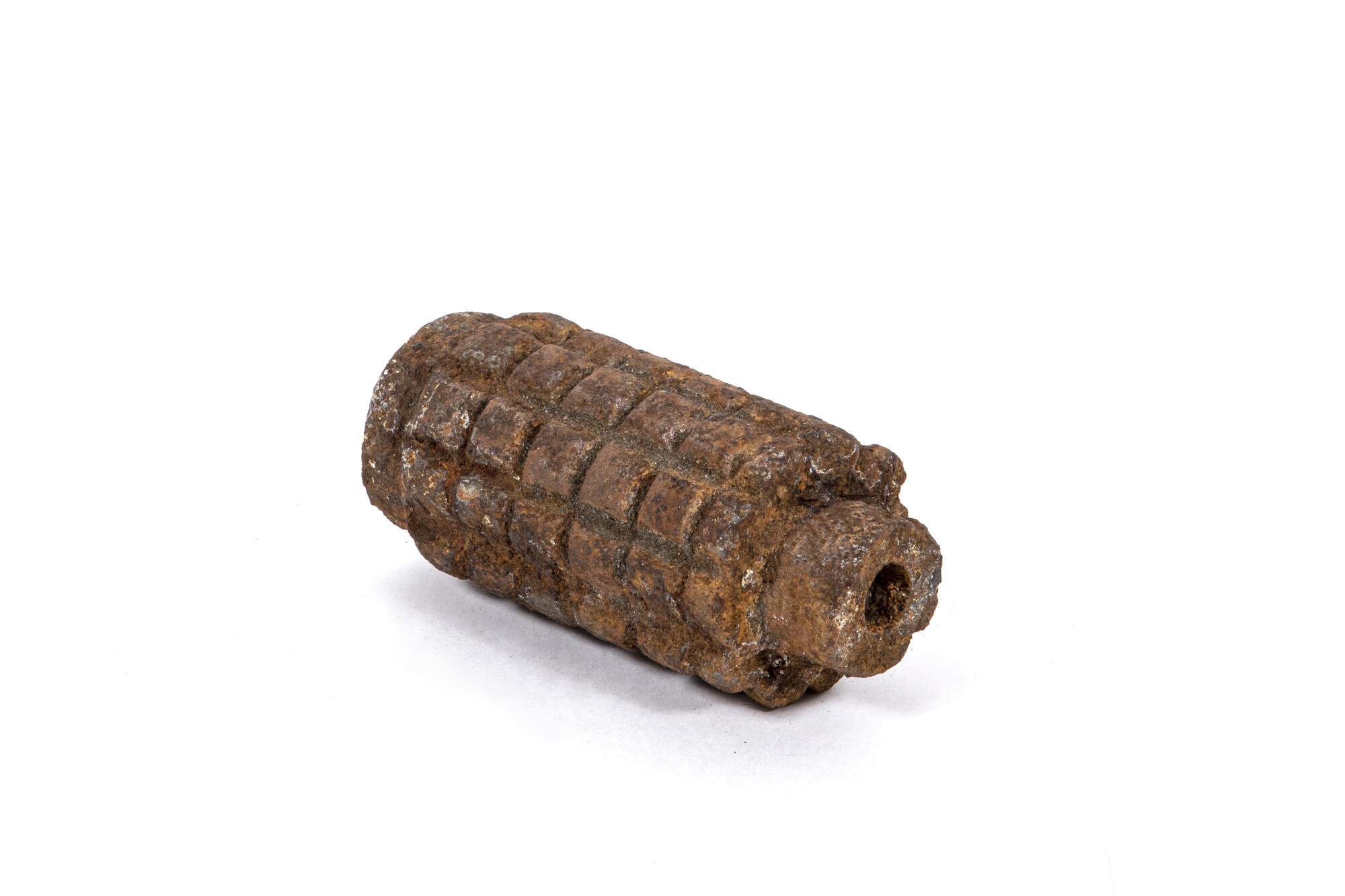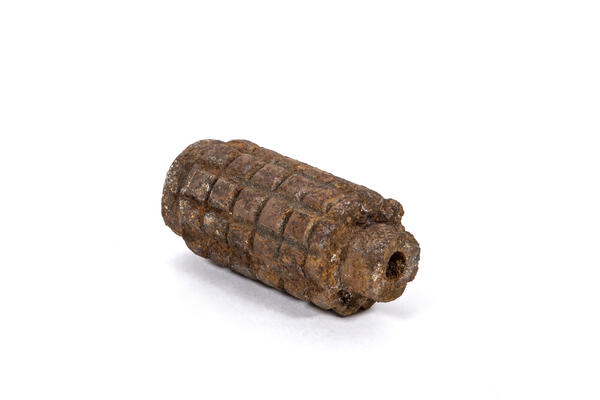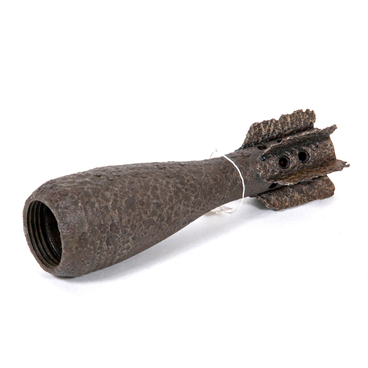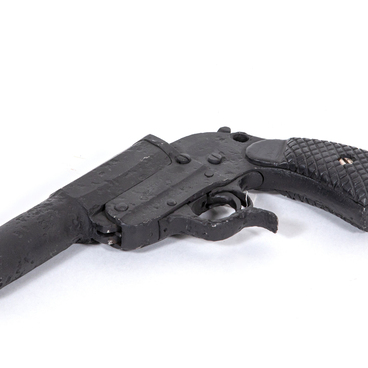The POMZ-2 anti-personnel fragmentation tripwire activated mine was developed in 1941 by engineers Pavel Radevich and Nikolai Ivanov. It was intended for disabling enemy troops and became one of the most common mines in 1941-1943.
The main element of the POMZ-2 was the cast-iron ribbed body. There were notches on its outer side so that when the mine is activated, it would explode into small similar fragments. A small TNT explosive charge, of about 75 grams, was inside the sleeve. To make the mine combat ready, TNT was laid in it, an igniter with a fuse, and a P-shaped firing pin was inserted through a vertical tube into the casing from above. The standard modernized simplified tripwire fuze (MUV) was most often used with the POMZ-2 mines.
The POMZ-2 was installed manually as part of minefields, and set up separately on different trails. The loaded cast-iron casing was fixed on a wooden peg driven into the ground. One or two thin wire extensions up to eight meters in length were connected to the fuse’s firing pin. They were positioned perpendicular to the likely path of the enemy troops. On the other side, the wires were tied to a second peg, fence stakes or trees, as soldiers tried to disguise the mines. The height of the tripwire was 15-20 centimeters. The mine exploded when an enemy soldier, snagging a wire with their foot, pulled out the firing pin.
During the explosion, the casing shattered into 400 lethal fragments, which created a continuous field of destruction with a radius of up to 20 meters.
The casing of the POMZ-2 mine presented in the exhibition was donated to the museum by Lyudmila Buryak, the chairman of the Noyabrsk ‘Committee of Soldiers' Mothers of Russia “. She brought it from a trip to Chebarkul, where soldiers from Noyabrsk served in 7th Separate Guards Red Banner, Order of Suvorov, Kutuzov and Alexander Nevsky of the Orenburg Cossack brigade.
The command of the brigade handed over to Lyudmila Buryak the finds from the excavations carried out in 1990-1993 in the Leningrad Oblast by the joint search team of schoolchildren of the Ural Federal District. The artifacts found at the battlefields, including the cast-iron body of the POMZ-3, were stored in a military unit.
The main element of the POMZ-2 was the cast-iron ribbed body. There were notches on its outer side so that when the mine is activated, it would explode into small similar fragments. A small TNT explosive charge, of about 75 grams, was inside the sleeve. To make the mine combat ready, TNT was laid in it, an igniter with a fuse, and a P-shaped firing pin was inserted through a vertical tube into the casing from above. The standard modernized simplified tripwire fuze (MUV) was most often used with the POMZ-2 mines.
The POMZ-2 was installed manually as part of minefields, and set up separately on different trails. The loaded cast-iron casing was fixed on a wooden peg driven into the ground. One or two thin wire extensions up to eight meters in length were connected to the fuse’s firing pin. They were positioned perpendicular to the likely path of the enemy troops. On the other side, the wires were tied to a second peg, fence stakes or trees, as soldiers tried to disguise the mines. The height of the tripwire was 15-20 centimeters. The mine exploded when an enemy soldier, snagging a wire with their foot, pulled out the firing pin.
During the explosion, the casing shattered into 400 lethal fragments, which created a continuous field of destruction with a radius of up to 20 meters.
The casing of the POMZ-2 mine presented in the exhibition was donated to the museum by Lyudmila Buryak, the chairman of the Noyabrsk ‘Committee of Soldiers' Mothers of Russia “. She brought it from a trip to Chebarkul, where soldiers from Noyabrsk served in 7th Separate Guards Red Banner, Order of Suvorov, Kutuzov and Alexander Nevsky of the Orenburg Cossack brigade.
The command of the brigade handed over to Lyudmila Buryak the finds from the excavations carried out in 1990-1993 in the Leningrad Oblast by the joint search team of schoolchildren of the Ural Federal District. The artifacts found at the battlefields, including the cast-iron body of the POMZ-3, were stored in a military unit.



